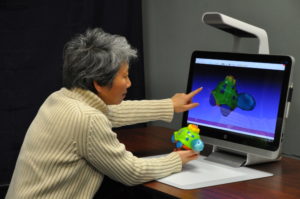Here’s What AR and Other Similar Technologies Can Do for Your Business

What is one piece of advice you’d give to businesses looking to invest in Augmented Reality (AR) technology?
It’s the simple and classic advice, really. If you are an enterprise looking to bring AR into your organization, be very clear on what business problem you are trying to solve. Companies often want to “try out” new technology, to play with the latest gadgets and see what they do rather than focusing on solving a real business problem.
There are many AR use cases that provide real benefit by improving the performance and efficiency of the company operations. It is important to understand your business problem, then pilot a suitable AR solution and measure the outcome. This may include reducing time to complete a task, minimizing errors, and/or lowering costs of interruptions. These are all benefits that improve the bottom line.
The AREA portal offers more information on how to get started.
Can you discuss a few use cases of augmented reality for industrial professionals? Are there any barriers to adoption businesses should be aware of?
Based on my experience of speaking to the many enterprises and providers in the AR ecosystem, the use cases that are currently getting most traction include:
- Remote assistance — being able to discuss with an expert (anywhere in the world) and use AR technology to show how to fix the problem.
- Step-by-step guidance — using an AR-enabled mobile, tablet, or wearable device to show how and what to do when completing a task. This use case works particularly well for infrequent and complicated tasks.
In terms of barriers, the technology is still being developed and will continue to improve.
AR for Enterprise Alliance (AREA) has also identified business problems that it is working to overcome. These include issues when moving from pilot to full deployment. The members are working to understand and overcome safety, security, and human issues (e.g., convincing stakeholders and ensuring the workers are involved), as well as providing useful tools like an ROI calculator and Safety/Human framework.
What is one myth surrounding this technology, or Industry 4.0 in general, you’d like to debunk for our readers?
That it is complicated and difficult to deploy! This is simply not the case, and the most successful implementers of AR solutions and Industry 4.0 have started with solutions using IoT data, with simple analysis, and using tablets, phones, or assisted-reality devices to display actionable information that brings quick and substantial benefit to the company and worker.
Where do you see Industry 4.0 heading?
For Industry 4.0 to continue to provide benefit to manufacturing, Internet of Things (IoT), Artificial Intelligence (AI), and AR technologies need to interact and work together better to help deliver more actionable outcomes. Benefit will also increase as the concept of the digital twin becomes commonplace, enabling designers to plan, develop, and test more efficient processes and products. These can be tested in the augmented world before being implemented in the physical.
This has been demonstrated by the next AREA research project (voted for by the members), where best practices and the merging of IoT, AI, and AR technologies will be researched.
In the future, you can envisage a self-supporting manufacturing process able to solve its own simple problems allowing staff to see (via AR) issues that need timely intervention.

